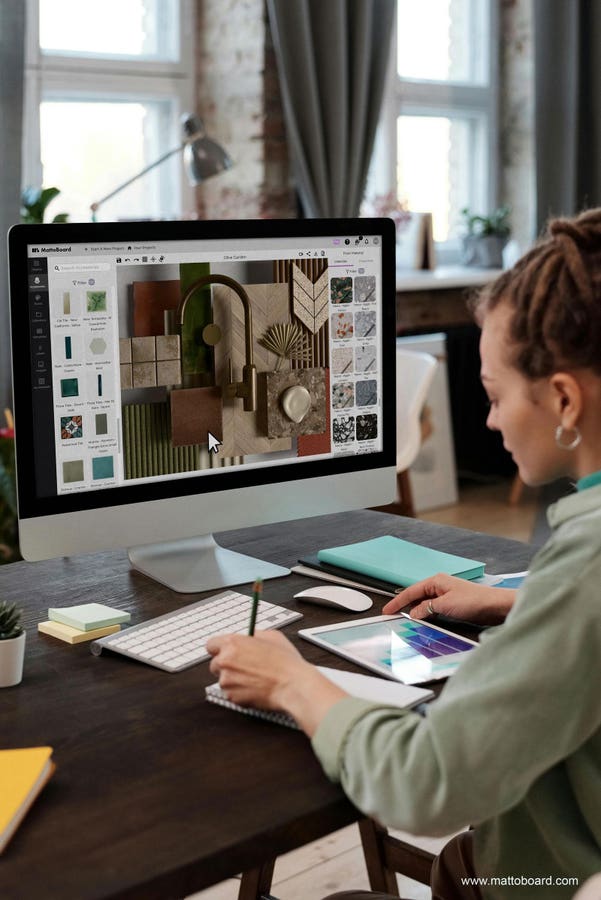What if designing your dream space no longer required paint swatches, fabric samples, or weeks of waiting?
While proptech headlines often highlight automation, analytics, and administrative efficiency, another shift is underway. This one focuses on creativity. Proptech has traditionally aimed to eliminate manual processes: digitizing leases, streamlining escrow, and simplifying insurance workflows. But the next wave of innovation is not about signatures or contracts. It is about imagination. Investors have already caught on – venture capital investment in proptech reached $15.1 billion in 2024.
A key area of this evolution is 3D sampling powered by proptech AI. This category is giving designers and architects faster, smarter ways to conceptualize and communicate their ideas. One standout is Mattoboard, a startup offering virtual material sampling through high-resolution 3D renderings. The company recently raised a $2 million seed round led by Acrobator Ventures with participation from retail giant Home Depot. With Mattoboard, the days of waiting for physical samples are replaced by digital tools that simulate texture, light, gloss, and depth with photorealistic accuracy.
For CEO and co-founder Guy Ailion, this is more than a business—it is a personal mission. As a trained architect with more than 20 years of experience, he has experienced firsthand how physical sampling can slow down entire projects. “Physical sampling slows down the whole industry,” Ailion said. “It makes it frustrating to gather palettes, present them to clients, and pivot when preferences change. We needed a virtual library.”
Mattoboard’s platform blends AI-powered material discovery with a high-fidelity digital catalog, allowing designers to move from idea to client-ready presentation with greater speed and flexibility. More than 200,000 professionals now use the product, and brands like Behr, Formica, and Jung have joined the ecosystem to increase visibility and product adoption.
How Proptech AI Is Shaping Design Experiences
Much of proptech to date has focused on eliminating busywork. But the overlooked opportunity lies in enhancing the visual and emotional experience of spaces. Ailion believes this creative layer—how rooms look, feel, and evolve—will soon become the most influential part of the industry.
“People see the top layer of AI being so good at the admin level,” he said. “But design is a visual industry, and it is going to be even more impacted by 3D and AI.”
Another notable player in this space is Theia, a startup using AI to generate spatial layouts and design mockups from simple text prompts. Designers can input client needs, for example, “a modern kitchen with natural light and Scandinavian finishe,” and receive fully rendered design options in seconds. Theia’s generative AI engine analyzes architectural best practices and material databases to create contextually relevant results.
Even outside the traditional boundaries of real estate, platforms like Canva are influencing how visual tools shape user expectations and workflows. Known for democratizing graphic design, Canva’s intuitive interface and collaborative features are being adopted by real estate agents, interior designers, and property marketers alike. Users can create everything from mood boards, to listing visuals and pitch decks.
Its success (the company was recently valued at almost $50 billion) underscores a larger trend: visual-first platforms can scale from individual users to enterprise clients without losing usability. Canva is paving a roadmap for proptech startups by demonstrating how design-focused, user-friendly tools can evolve from early-stage experiments into essential software used across industries.
This trend reflects a broader movement in proptech AI: empowering users with minimal technical knowledge to engage in sophisticated design workflows. Democratizing access to high-end design tools could redefine who participates in the creative process, extending it beyond professionals to real estate agents, homeowners, and developers.
This shift has far-reaching implications. Imagine not only digital twins of buildings, but also dynamic digital catalogs of finishes and furnishings. Designers could visualize spaces in real time, adjusting materials, colors, and lighting instantly based on client feedback.
Millennials and Gen Z now account for 60% of home buyers, and this demographic prioritizes personalization and design flexibility in their renovation decisions. With aging housing stock in need of creative revitalization, this visual layer of proptech is positioned to grow quickly. The future of the industry may not be defined by back-office efficiency, but by how quickly and vividly ideas become reality.
Read the full article here

